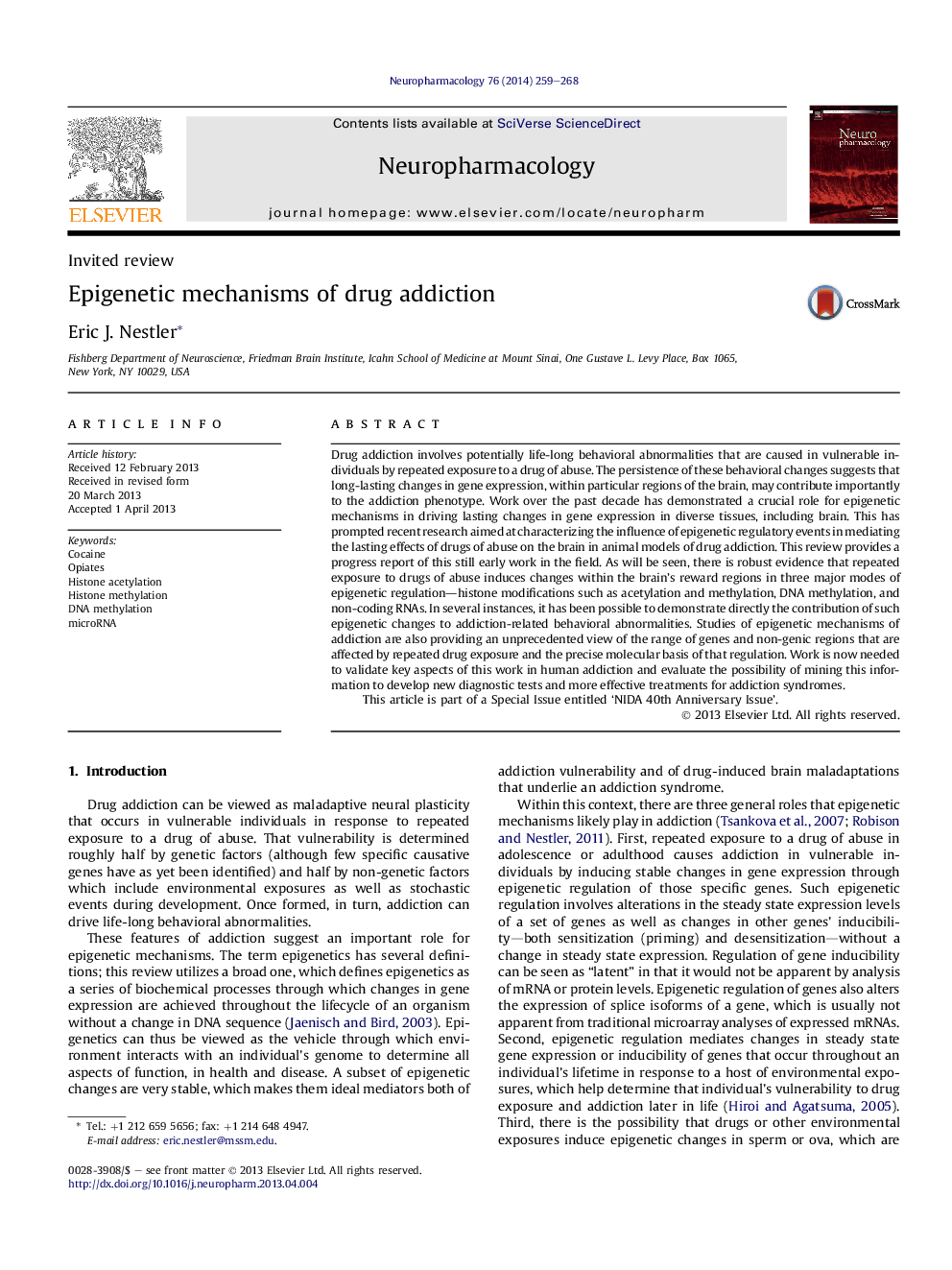| کد مقاله | کد نشریه | سال انتشار | مقاله انگلیسی | نسخه تمام متن |
|---|---|---|---|---|
| 2493274 | 1115497 | 2014 | 10 صفحه PDF | دانلود رایگان |
• Epigenetic regulation mediates adaptations to the environment such as abused drugs.
• Epigenetic regulation includes post-translational modifications of histones.
• Epigenetic regulation also includes DNA methylation and non-coding RNAs.
• Each of these epigenetic mechanisms are influenced by drugs of abuse.
• In turn, these epigenetic mechanisms control behavioral responses to the drugs.
Drug addiction involves potentially life-long behavioral abnormalities that are caused in vulnerable individuals by repeated exposure to a drug of abuse. The persistence of these behavioral changes suggests that long-lasting changes in gene expression, within particular regions of the brain, may contribute importantly to the addiction phenotype. Work over the past decade has demonstrated a crucial role for epigenetic mechanisms in driving lasting changes in gene expression in diverse tissues, including brain. This has prompted recent research aimed at characterizing the influence of epigenetic regulatory events in mediating the lasting effects of drugs of abuse on the brain in animal models of drug addiction. This review provides a progress report of this still early work in the field. As will be seen, there is robust evidence that repeated exposure to drugs of abuse induces changes within the brain's reward regions in three major modes of epigenetic regulation—histone modifications such as acetylation and methylation, DNA methylation, and non-coding RNAs. In several instances, it has been possible to demonstrate directly the contribution of such epigenetic changes to addiction-related behavioral abnormalities. Studies of epigenetic mechanisms of addiction are also providing an unprecedented view of the range of genes and non-genic regions that are affected by repeated drug exposure and the precise molecular basis of that regulation. Work is now needed to validate key aspects of this work in human addiction and evaluate the possibility of mining this information to develop new diagnostic tests and more effective treatments for addiction syndromes.This article is part of a Special Issue entitled ‘NIDA 40th Anniversary Issue’.
Journal: Neuropharmacology - Volume 76, Part B, January 2014, Pages 259–268
